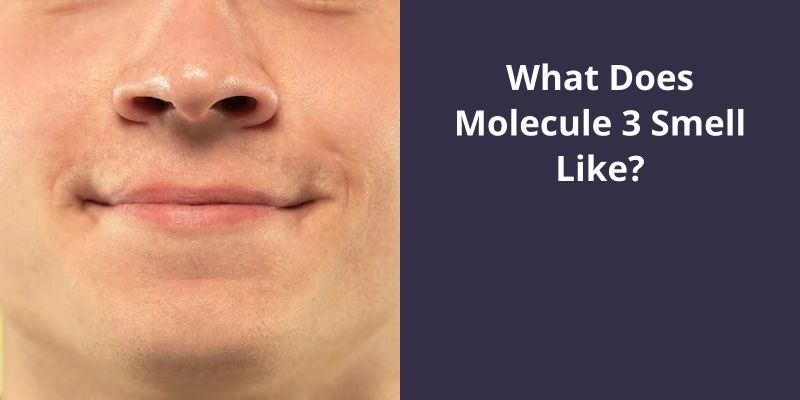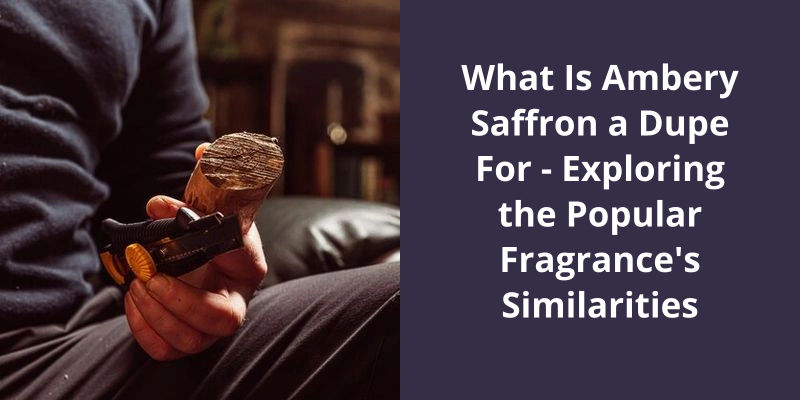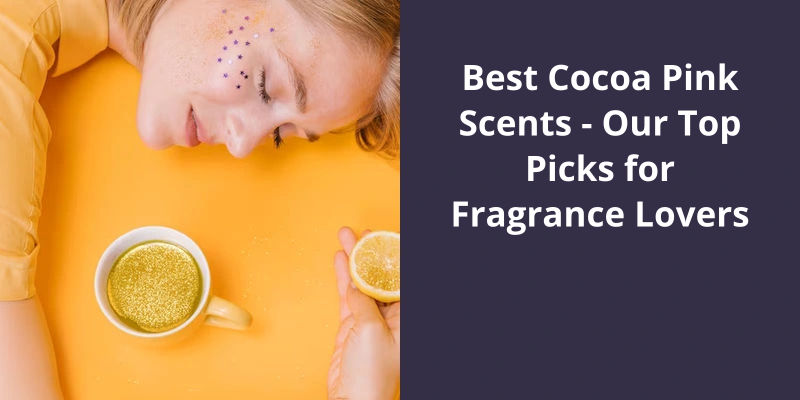Imagine standing in a lush green field, surrounded by the gentle whispers of nature. As you take a deep breath, the earthy aroma of vetiver fills your senses, transporting you to a world of tranquility and sophistication. This is the essence of molecule 3, a captivating fragrance born from the distillation of the roots of an Indian grass. But it isn’t just any ordinary vetiver oil, for this precious fraction has been carefully intertwined with acetic acid, a delicate process that brings forth a remarkable transformation. The resulting aroma is a harmonious symphony, with the familiar woody and grassy undertones of vetiver delicately softened and refined. Gone are the bitter and leathery aspects, replaced by an elegance and smoothness that’s both captivating and alluring. So, what does molecule 3 smell like? It’s a scent that evokes sophistication, a balance between the natural and the transformed, and a journey that invites you to explore the nuances of olfactory delight.

What Is the Most Popular Molecule Perfume?
Molecule 01 has gained a reputation as one of the most popular and iconic molecules in the world of perfumery. Despite it’s simple composition, consisting solely of Iso E Super, this fragrance captures the attention and fascination of scent enthusiasts worldwide.
It’s scent is often described as warm, woody, and musky, with a delicate hint of sweetness. The combination of these olfactory notes creates a captivating aura that lingers on the skin, leaving a memorable impression. This alluring quality has contributed to it’s popularity and cult-like following.
It’s the remarkable ability to exude a sense of understated elegance and sophistication without being overpowering. It’s subtle presence draws people in, inviting them to lean in closer and uncover the elusive beauty of this enigmatic molecule.
The Science Behind Molecule 01: Exploring the Specific Properties and Effects of Iso E Super, the Sole Component of Molecule 01 Perfume.
The Science Behind Molecule 01 revolves around the exploration of Iso E Super, the main component of the perfume. Iso E Super is a synthetic molecule known for it’s fascinating olfactory properties. When applied to the skin, it blends with an individual’s natural scent and creates a unique fragrance, personalized to the wearer. Due to it’s elusive nature, Molecule 01 exhibits a compelling effect on different people, appearing as a subtle, woody aroma with a velvety touch. It’s simplicity and captivating allure make it a sought-after fragrance among those who appreciate a minimalist and intriguing scent profile.
In the case of Molecule 01 perfume, the reason it may not have a strong scent on some individuals could be due to their varying sensitivity to the key ingredient, Iso E Super. While most people can detect these fragrance materials within a normal range, some may have a higher sensitivity, while others may struggle to perceive them.
Why Does Molecule Perfume Not Smell on Me?
Many factors can affect how a perfume smells on an individuals skin, including body chemistry and skin pH. Molecule 01, which contains only the aroma-molecule Iso E Super, can be particularly elusive in terms of scent perception. This molecule has a unique ability to blend with a persons natural body odor, resulting in a personalized scent that may be difficult to detect by the wearer themselves.
The sensitivity to fragrance ingredients can vary greatly from person to person. Some individuals may have a heightened sense of smell and easily pick up on the subtle notes of Molecule 01, while others may have a less sensitive olfactory system that struggles to perceive the scent. It’s also worth noting that our sense of smell can become desensitized to certain fragrances over time, so an individual who’s been using Molecule 01 for a prolonged period may find it less noticeable.
To maximize the longevity and projection of Molecule 01, it’s recommended to apply it on well-moisturized skin, ideally after a shower or bath. The moisturizer can help to trap the scent molecules and release them slowly throughout the day, enhancing the overall fragrance experience. Additionally, applying the perfume to pulse points such as the wrists and neck can help to release the scent more effectively as these areas generate heat, allowing the fragrance to evaporate and create a lingering aura.
The Role of Individual Sensitivity to Fragrance Ingredients
- Fragrance ingredients
- Individual sensitivity
- Role of individual sensitivity
The phenomenon of Molecule 01 has left fragrance enthusiasts intrigued and captivated. This mysterious scent has a unique quality; it can’t be detected by the wearer, only by those who come into it’s presence. While the wearer may be left wondering about it’s allure, the affirmation from the compliments of passing peers confirms the elusive scent’s value. However, it’s important to understand that this fragrance defies the norms, as it’s distinctly different from traditional perfumes. Despite it’s lack of detectability on oneself or in the bottle, Molecule 01 holds a distinctive charm that continues to fascinate and mesmerize.
Can You Smell Molecule on Yourself?
Molecule 3, also known as Molecule 01, holds a mysterious aura that captivates the olfactory senses. Wrapped in an enigmatic allure, this fragrance possesses a unique characteristic: the wearer cant detect it’s scent on themselves. It’s only through the comments and reactions of those passing by that one can be assured of it’s value.
Curiosity lingers as individuals apply this mystifying fragrance, wondering how they’ll be perceived by others. The anticipation of the reactions they receive becomes a unique motivator, as the wearer becomes an observer of their own perfume.
It’s intriguing to consider the psychology behind this phenomenon. Molecule 3 challenges our primal instinct of self-awareness, prompting us to rely on the validation and affirmation of others to appreciate our own fragrance. By relying on external perceptions, we surrender control over our olfactory experience, inviting others to interpret our aura.
The magic of Molecule 3 lies in it’s ability to create an invisible identity for the wearer. Like a secret language, only those in proximity can decipher it’s whisper. As others catch a whiff, they’re transported into a realm of intrigue and captivation, leaving a lasting impression.
It doesn’t conform to traditional expectations, only revealing it’s ethereal nature through the reactions of others. By surrendering our own ability to perceive it’s scent, we embark on a journey of connection and shared sensory experiences. The wearer becomes an enigmatic entity, sought after for their invisible aura that only exists in the nostrils of others.
The History of Molecule 3 and the Other Fragrances in the Molecule Series.
- Introduction to the Molecule series
- Early development of Molecule 1 fragrance
- Positive reception and popularity of Molecule 1
- Expansion and creation of Molecule 2 fragrance
- Unique characteristics and features of Molecule 2
- Continued success and growth of the Molecule series
- Origin and concept behind Molecule 3 fragrance
- Distinctive ingredients and composition of Molecule 3
- Launch and reception of Molecule 3 in the market
- Impact and influence of the Molecule series in the fragrance industry
Watch this video on YouTube:
It’s scent fluctuates between light and subtle, making it intriguing and captivating. Javanol adds a touch of warmth and sensuality, enhancing the overall fragrance experience.
What Does Molecule 4 Smell Like?
What Does Molecule 3 Smell Like?
Molecule 4, also known as Javanol, has a unique and captivating scent. It can be described as a combination of various aromatic elements. When you first encounter this molecule, it emits a distinct aroma reminiscent of liquid metallic grapefruit peel. The tangy and refreshing notes of grapefruit create an invigorating sensation.
As the scent develops, it transforms into something more delicate and soothing. The metallic accents of the grapefruit gradually merge with the fragrance of velvety cream-colored roses. The result is a harmonious blend of soft and floral undertones, evoking a sense of elegance and luxury.
Javanol shares similarities with Iso E Super, another well-known fragrance molecule. Like Iso E Super, Javanol has a subtle and elusive presence. It’s the ability to appear and disappear throughout the day, leaving a trail of captivating scent behind. This characteristic adds an air of mystery and intrigue to the fragrance, making it all the more alluring.
These fragrances come in sleek and minimalist cases, allowing you to carry them with ease wherever you go. The 30ml size ensures that you’ve an ample supply of your favorite scent, ready to be enjoyed whenever you desire.
Escentric Molecules Perfume Collection offers a range of luxurious and unisex scents. Molecule 01, in particular, stands out for it’s remarkable composition. With it’s intriguing aroma and convenient packaging, Molecule 4 is sure to become a favorite among perfume enthusiasts.
The Process of Creating Synthetic Fragrances
The process of creating synthetic fragrances involves several steps. First, chemists identify the desired scent or combination of scents that they want to replicate. They then analyze the natural compounds responsible for these smells and try to recreate them synthetically.
Using a variety of chemical reactions and techniques, they create molecules that mimic the molecular structure of the natural compounds. These synthetic molecules are then blended together in specific ratios to replicate the scent profile.
Once the fragrance formula is finalized, it can be used in various products like perfumes, soaps, and candles. In some cases, additional ingredients or enhancers are added to enhance the longevity and projection of the fragrance.
Molecule 3, in particular, refers to a specific synthetic molecule used in fragrances. It’s smell would depend on it’s chemical properties and how it interacts with other compounds in the fragrance composition. Without specific information about the molecular structure of Molecule 3, it’s difficult to say exactly what it smells like.
Conclusion
In conclusion, Molecule 3, also known as Vetiveryl Acetate, exudes a distinctive and captivating aroma. Derived from the roots of an Indian grass, this molecule undergoes a meticulous distillation process to refine it’s essence. Through the fusion of acetic acid, the bitter and leathery undertones are skillfully eliminated, allowing the true beauty of Vetiveryl Acetate to shine. The end result is a fragrance that embodies sophistication and refinement, with it’s woody and subtly grassy notes. This elegant essence whispers of tranquility and evokes a sense of softness, making it a truly delightful addition to any olfactory composition. It unveils a harmonious marriage between nature and artistry, creating a fragrance that’s both timeless and irresistibly alluring.





